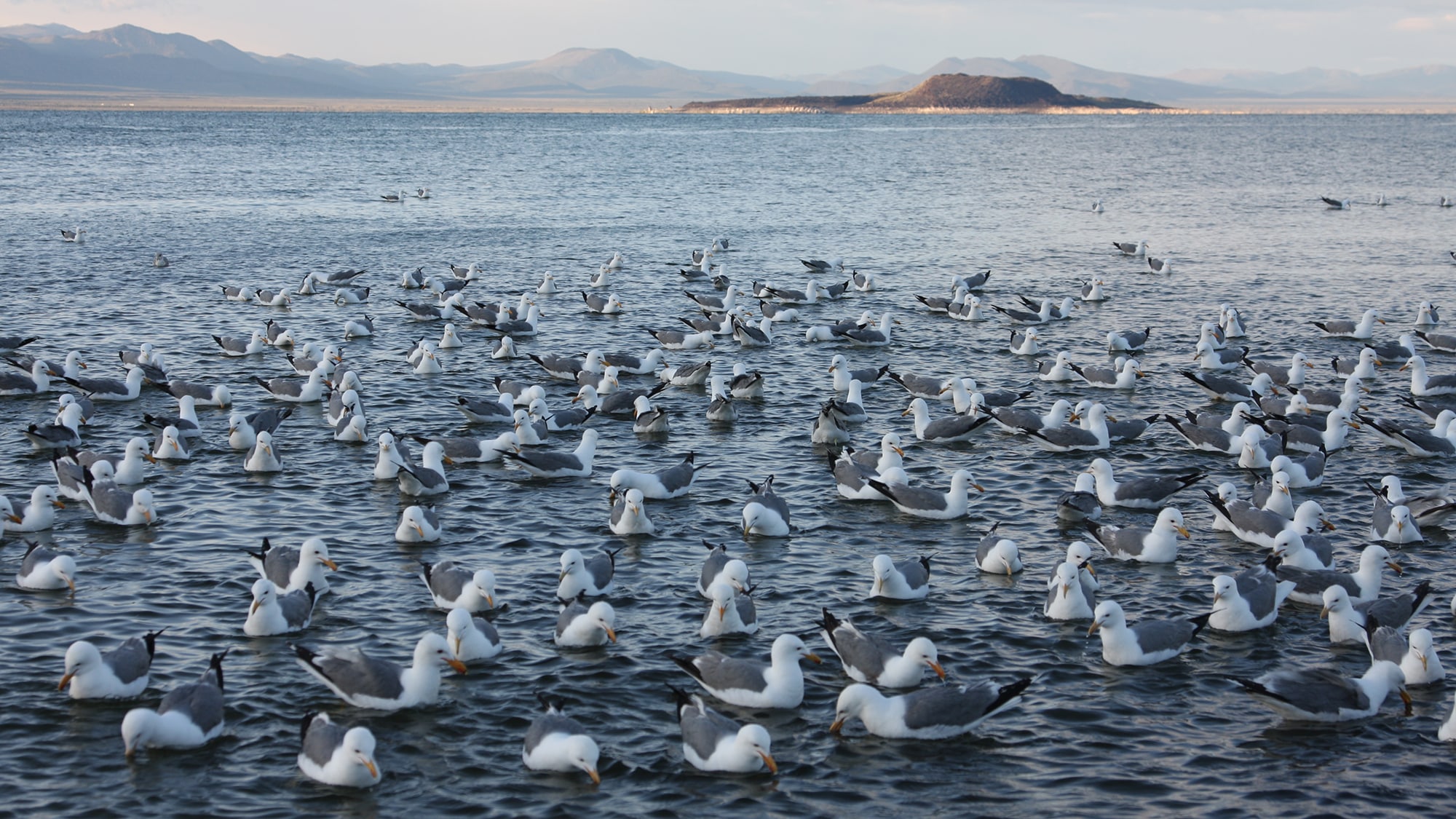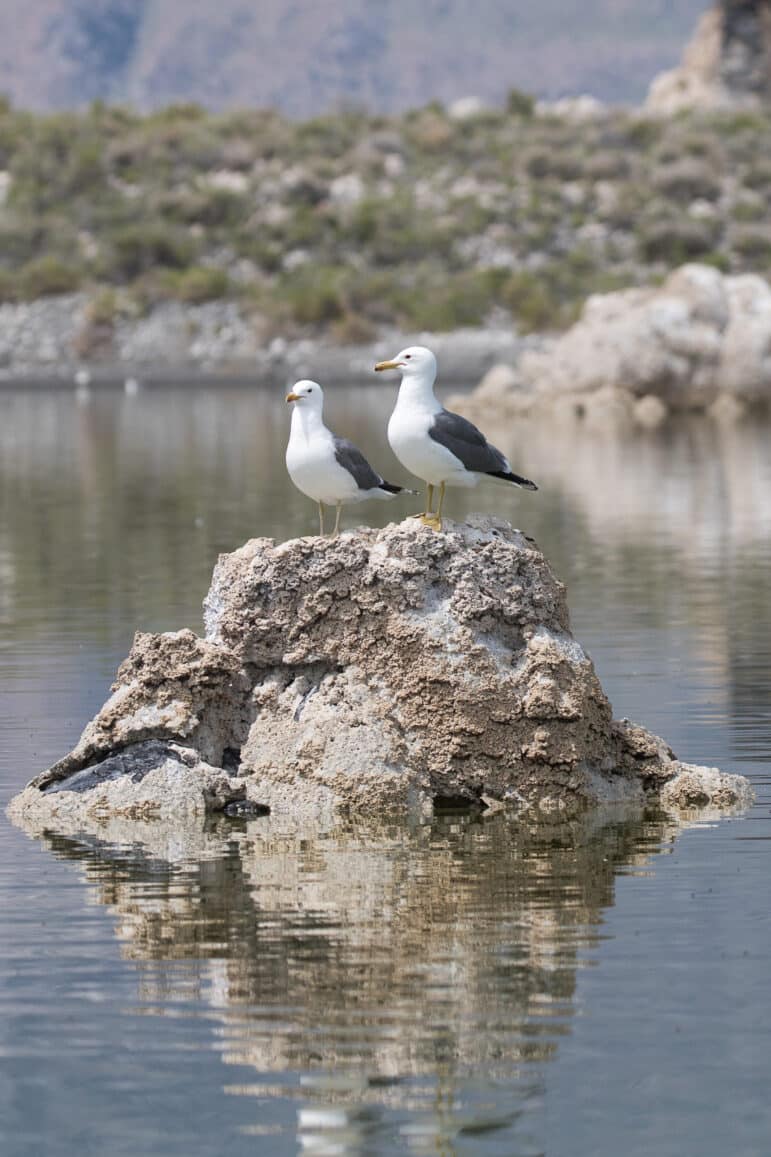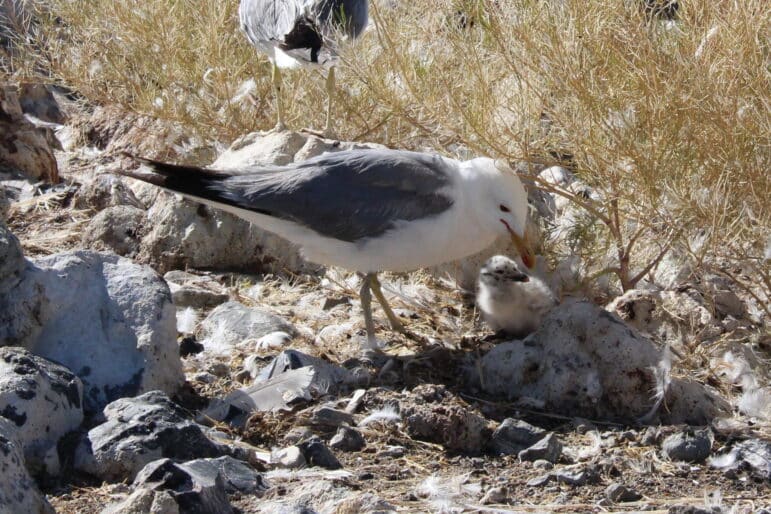
This winter has exceeded all expectations in terms of snowfall at Mono Lake. From the Mono Basin’s tallest mountains to the low-lying shores of the lake, the snowpack is deep and persisted through the month of March in an unprecedented way thanks to heavy and recurring snow events, which will produce well above 200% of the long-term seasonal runoff average. This bodes well for Mono Lake in 2023, which during the upcoming runoff season is expected to rise substantially as a result of large snowmelt flows surging through its tributary streams.
The lake has already risen over one foot this winter to a surface level just below 6,380 feet. This welcome turn of events is a surprise; back in December our hydrology analysis deemed such a rise “physically possible but not probable.” Because 6380 feet is considered the fence deployment trigger level, and because the lake will rise higher during the nesting season, the Mono Lake Committee will deploy a predator monitoring system and not be constructing a temporary electric gull protection fence on the landbridge in 2023.

Flexible planning
2023 marks the third year that the Committee has had to make plans for deploying the gull protection fence. The first time was in 2017 when the one-mile fence was first constructed in response to coyotes reaching one of the gull nesting islets in 2016, which has since been abandoned. The fence in 2017 successfully protected the gulls during the early months of the nesting season at a lake level of 6,377 feet until runoff from the record snowpack raised the lake more than four feet over the summer, providing adequate water to protect the gulls.
The second time was last year in 2022 when the lake level was forecast to be very close to the critical level of 6,380 feet by April 1, with only a small margin of error that could easily put the gulls in the danger zone. The Committee, in consultation with California Gull scientists from Point Blue Conservation Science (Point Blue), after months of planning and preparation determined that the lake level would provide adequate protection for the gulls. In 2022 we therefore shifted efforts to remote monitoring of coyote activity on the landbridge. Although coyotes were observed on camera exploring the edges of the landbridge, none swam out to the islands as they had in 2016 thanks to the higher lake level.
The third time was last fall when we began preparations for the 2023 gull nesting season. Based on the best data available at the time, we were fairly confident that we would have to deploy the gull protection fence even if the winter proved to be wet because data suggested that the lake wouldn’t rise in time to adequately protect the gulls, as was the case in 2017. But this winter has exceeded all expectations. With the immediate threat of coyotes accessing the islets greatly reduced, the Committee is now working with Point Blue biologist Ryan Burnett to install a monitoring network of cameras on the landbridge and islands to monitor for coyote activity as a continuation of last year’s efforts.
Long-term planning
While the exceptionally wet winter is providing some relief for the nesting California Gulls, it is important to recognize that a single wet year alone will not be enough to safeguard their habitat in the long term. Continuing water exports by the Los Angeles Department of Water & Power coupled with drought conditions have prevented the lake from reaching the public trust lake level of 6,392 feet. This underscores the urgent need for the State Water Board to take action to ensure that gains at Mono Lake are preserved for the benefit of the gulls and their nesting habitat. In the meantime, the Committee will continue to coordinate and collaborate with management agencies and Point Blue biologists to make sure we are prepared to act when needed to protect the gulls and preserve this important nesting habitat.

Top photo by Arya Degenhardt.
